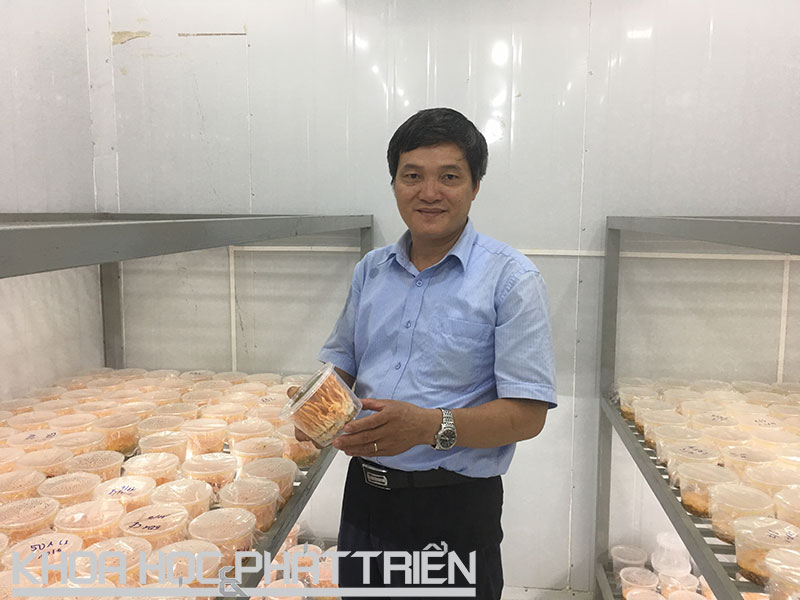[ad_1]

Dr Ngo Xuan Nghien
Dr Ngo Xuan Nghien, the head of the center, has returned from Krong Ana district of Dak Lak province, where farmers are growing GA2 mushrooms created by Nghien and his co-workers.
Krong Ana’s people began growing mushrooms in 2008. However, with backward farming practices and substandard seed quality, the productivity was very low. Nghien and Dr Nguyen Thi Bich Thuy then decided to put GA2 into cultivation on a trial basis at the Krong Ana Cooperative in March 2018, while persuading locals to revive the mushroom cultivation.
After three months of working, Nghien and local people could reap fruit. In the past, one ton of materials could create 15-20 kilograms of dry mushrooms, while it now can generate 25-30 kilograms.
|
The failure rate has fallen from 30 percent to 10-15 percent. The mushroom was thick with brown color. Never before had the farmers in Krong Ana harvested such a high-quality crop. |
The failure rate has fallen from 30 percent to 10-15 percent. The mushroom was thick with brown color. Never before had the farmers in Krong Ana harvested such a high-quality crop.
Other species of lingzhi mushroom cannot tolerate temperature of lower than 22oC and higher than 28oC, so farmers could only grow mushrooms from April to July.
Meanwhile, GA2 can develop well under the temperature of 20-32oC, so farmers can grow GA2 all year round.
GA2 is just one of the achievements the center has gained over the last four years since the day of establishment. The scientists at the centers have vowed to create new original mushroom varieties to provide to businesses for commercial development so as to escape reliance on imports.
According to Nghien, in the 1990s, Vietnam only knew several varieties of mushrooms, including oyster, button, straw mushrooms and cat’s ear. As farmers grew mushrooms without much knowledge, they usually had failed crops and many had to give up farming.
In 1995-1996, Nghien and his colleagues, who then worked for the Institute of Agricultural Genetics, began reviving mushroom cultivation and tried the first projects.
In 2010-2011, the scientists came to a conclusion that mushroom needs to be developed into a key product of Vietnam. The five most advantageous varieties of mushrooms Vietnam are oyster, straw, button, lingzhi and cat’s ear.
At that moment, Nghien and his co-workers compiled the national program on developing mushroom products.
Also over the last four years, the center has selected and generated a set of mushroom varieties which has productivity and quality suitable for ecological sub-regions in Vietnam. The center collects, preserves and stores gene sources of over 200 different mushroom species, including very precious ones such as nam van chi (Trametes versicolor) and nam dau khi (Hericium erinaceus).
RELATED NEWS
New advance of made-in-Vietnam vaccines
Biologist fights against the “silent forests”
Thanh Lich
[ad_2]
Source link
